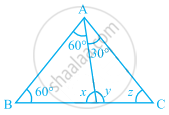Advertisements
Advertisements
प्रश्न
Two adjacent angles are equal. Is it necessary that each of these angles will be a right angle? Justify your answer.
उत्तर
We know,
Two angles are said to be adjacent, if they have a common vertex, a common arm, and their non-common arms are situated on different sides of the common arm.
Also, we know that the linear pair axiom states that, if a ray stands on a line, then the sum of the two adjacent angles so formed is 180°.
It is given to us that the two adjacent angles are equal. Let us assume each of the adjacent angles measures x.
We know that the sum of two adjacent angles is 180°.
⇒ x + x = 180°
⇒ 2x = 180°
⇒ x = 90°
Thus, each of the adjacent angle is 90°.
APPEARS IN
संबंधित प्रश्न
Find the value of the unknown x in the following diagram:

Find the value of the unknown x and y in the following diagram:
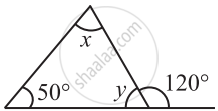
Find the value of the unknown x and y in the following diagram:

In the following triangle, find the value of x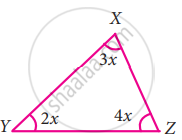
Observe the figure and find the value of ∠A + ∠N + ∠G + ∠L + ∠E + ∠S
How many triangles can be drawn having its angles as 45°, 64° and 72°? Give reason for your answer.
In the given figure, find the values of a, b and c.
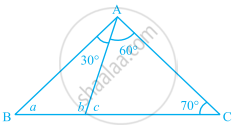
In the given figure, find the measures of ∠x and ∠y.
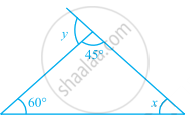
In ∆ABC, DE || BC (see figure). Find the values of x, y and z.

In the given figure, find the values of x, y and z.
